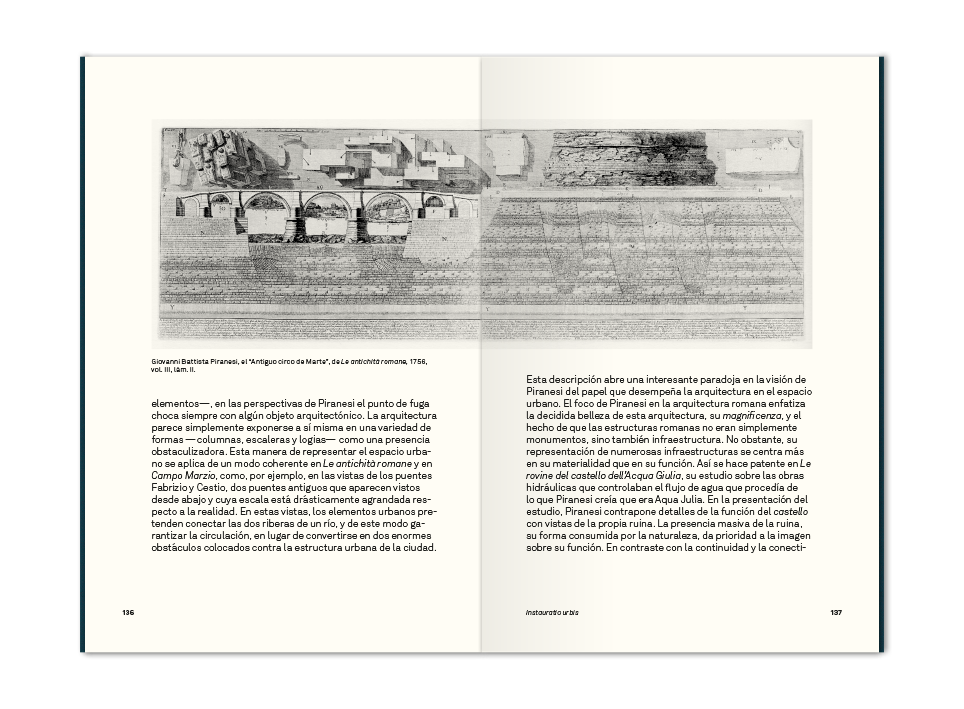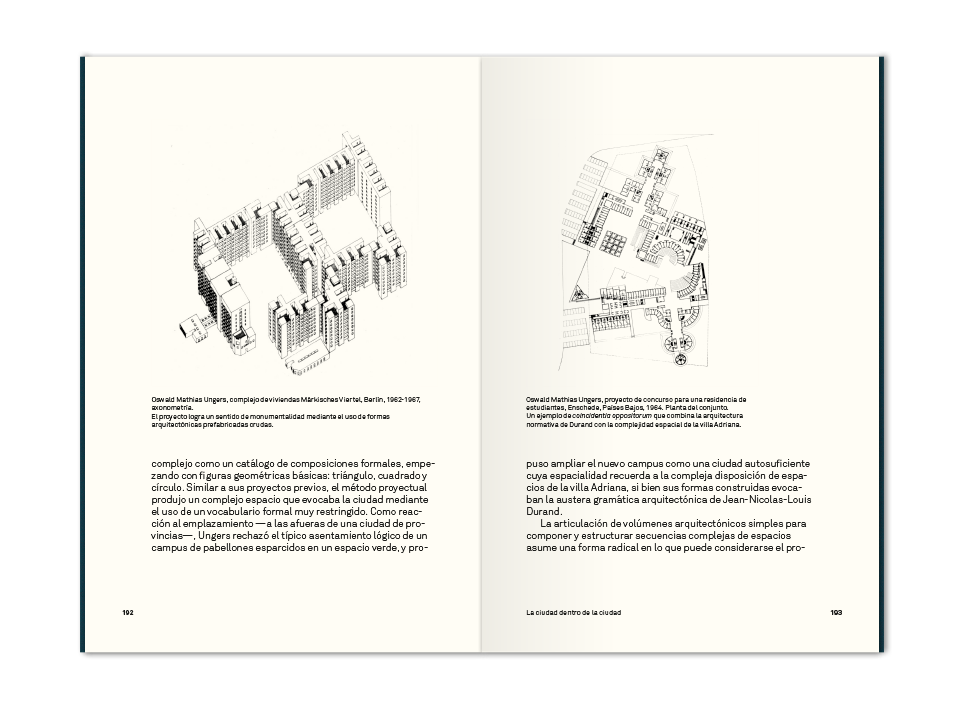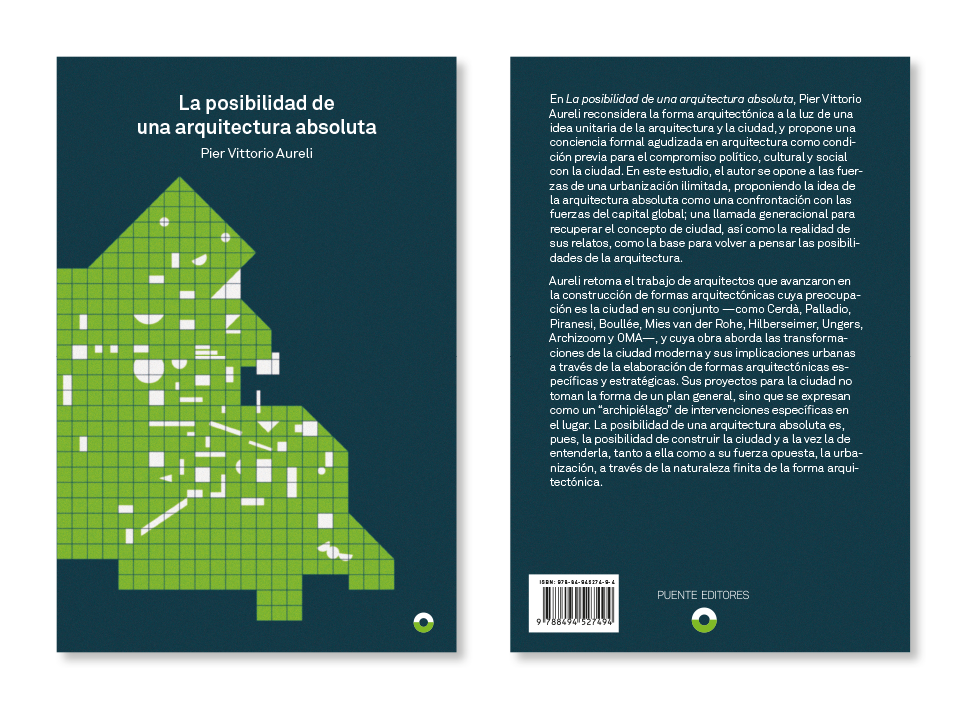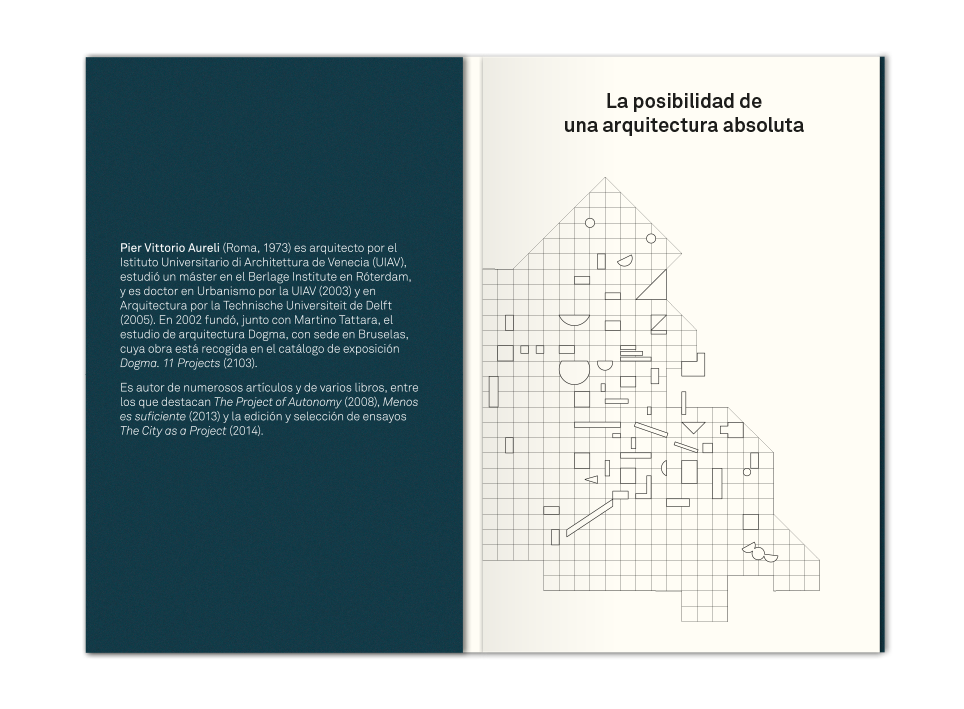***
Title: The Possibility of an Absolute Architecture | La posibilidad de una arquitectura absoluta
Author: Pier Vittorio Aureli
Editorial: Puente editores. ISBN: 9788494527487
Language: Spanish edition of The Possibility of an Absolute Architecture
240 pages
***
“The city within the city is not just the literal stage of the city’s lost form within the limits of architectural artifacts; it is also, and especially, the possibility of considering architectural form as a pint of entry toward the project of the city. In this sense, architecture is not only a physical object; architecture is also what survives the idea of the city”.
“La ciudad dentro de la ciudad no es solo pues, la escenificación literal de la forma perdida de la ciudad dentro de los límites de los artefactos arquitectónicos; también es y especialmente, la posibilidad de considerar la forma arquitectónica como un punto de entrada al proyecto de la ciudad. En este sentido, la arquitectura no es solo un objeto físico, sino también lo que sobrevive a la idea de la ciudad.”
Page 231. La posibilidad de una arquitectura absoluta. 2019, published by Puente Editores.

Nowadays, architecture undergoes a painful process and suffers without any possible solution. Its function as a commodity in a capitalist and globalized world that aims to find a short-term financial benefit, has stripped it of its qualities and possibilities within the city. Architecture has been reduced to a repeated and repeatable design product that can be quickly and fast exchanged. Within this economic framework, the city has become an endless speculative chessboard where buildings are marketed at a speed that knocks out the architectural practice. On the other hand, architectural theory and criticism are looking somewhere else; first, it is going again and again on discourses based on a nostalgic past that never really existed, second it is looking to the current urban condition in a usimple and reductionist way or, just enjoying a possible apocalyptic future. This double situation has caused architects to feel orphaned, without any critical position that could help us to organize our architectural discourse and position within the city. Critical essays on urbanism and the relation of architecture with the city explain contemporary dynamics between architecture, power, and market. Nonetheless, they hardly allow us to establish a critical position of resistance against them.
La arquitectura actual sufre proceso agónico y languidece sin vislumbrarse ninguna solución. Su función de mercancía en un mundo capitalista y globalizado que solo busca el rédito financiero a corto plazo, la ha despojado de sus posibilidades y cualidades dentro de la ciudad hasta reducirla a un producto de diseño repetido y repetible que pueda ser cuantificado de manera fácil y rápida. Dentro de este marco económico, la ciudad se ha convertido un tablero de ajedrez especulativo sin límites donde se mercadea con la edificación a una velocidad que noquea a la práctica arquitectónica. Por otro lado, la crítica arquitectónica mira para otra parte; bien volviendo una y otra vez sobre discursos basados en un pasado nostálgico que nunca llegó a existir; bien mirando a la coyuntura urbana de una forma infantil y reduccionista o, sencillamente, disfrutando de un posible futuro cercano apocalíptico. Esta doble situación ha provocado que los arquitectos nos sintamos huérfanos, sin una posición crítica que nos ayude organizar nuestros propios discursos arquitectónicos y posición con respecto a la ciudad. Los textos críticos sobre el urbanismo y la relación de la arquitectura por y para con ciudad, más allá de explicar dinámicas contemporáneas entre arquitectura, poder y mercado, difícilmente nos han permitido establecer una posición crítica y de resistencia frente a ellas.
The Possibility of an Absolute Architecture is a different book: it makes questions and offers possibilities.
La posibilidad de una arquitectura absoluta es un libro distinto: ofrece preguntas y plantea posibilidades.
Pier Vittorio Aureli is an architect and critic, and co-founder of the architectural office DOGMA, an office that has not built any project yet. Nonetheless, he is able to focus these issues both in his books and architectural projects with a realistic and rigorous analysis. Moreover, he does not give up in providing an extraordinarily critical and ambitious perspective of the architectural possibilities.
Pier Vittorio Aureli es crítico y arquitecto, cofundador del estudio de arquitectura DOGMA, una oficina que hasta la fecha no ha construido ningún proyecto. Sin embargo, es capaz de enfocar estos temas tanto en sus libros como en los proyectos de su estudio con un análisis de la realidad riguroso y verosímil sin por ello renunciar a una visión crítica y una ambición sobre las posibilidades de la arquitectura extraordinaria.
The book of The possibility of an absolute architecture is framed within this context. It is a critical book that shed light on the current hostile context for architectural practice and, indirectly, gives some clues about how to proceed.
En este contexto se enmarca el libro de La posibilidad de una arquitectura absoluta, un texto crítico que arroja luz e, indirectamente, ofrece pistas sobre cómo actuar en un contexto hostil para la práctica arquitectónica.
“For the city is ultimately the only object for and method of architectural investigation: decisions about the form of the city are the only way to answer the question. Why architecture?
“La ciudad es el único objeto y método para la investigación arquitectónica: las decisiones sobre la forma de la ciudad son la única manera de contestar a la pregunta: ¿Por qué la arquitectura?.”
Page 56. La posibilidad de una arquitectura absoluta. 2019, published by Puente Editores.

The book begins with the Chapter Toward the Archipelago, where Pier Vittorio Aureli defines the “possibility of an absolute architecture” as the individuality of the architectural form that confronts the environment where is built after being separated from it. At the same time, Aureli states that the city is built from the composition of separated parts. After this moment, Aureli argues his theory within a historical frame of the construction of the city, from the Greek Acropolis to the Cerda masterplan of Barcelona and other analysis of the XX century such as Archizoom projects. Moreover, he uses as an example of the silent architecture of Mies and, particularly, the plinth as an element of separating and confronting the city.
El libro comienza con el capítulo Hacia el archipielago, donde Pier Vittorio Aureli define la “posibilidad de una arquitectura absoluta” como la individualidad de la forma arquitectónica que se separa y confronta al entorno donde se construye. A su vez, para Aureli la ciudad se construye a partir de la composición de partes separadas. A partir de aquí, defiende su teoría dentro de un marco histórico de la construcción de la ciudad, desde el Acrópolis griego, pasando por el Plan Cerdá de Barcelona, hasta otros análisis del Siglo XX como los de Archizoom. Además pone como ejemplo la arquitectura silenciosa de Mies y, en particular, el zócalo como elemento de separación y confrontación con la ciudad.
Once Aureli critically defines his statement, he transports us to a historical and geographical journey through the figures of Palladio, Piranesi, Boullée, Ungers and the first projects of OMA, within the cities of Vicenza, Venice, Rome, Paris, Berlin, and New York. He analyzes both built and unbuilt projects of these architects within the frame of the city and his theory. Suddenly, these well-known projects achieve some political features that we could not see before concerning the city.
Una vez definida de un modo crítico y directo su posicionamiento, Aureli realiza un viaje histórico y geográfico a través de las figuras de Palladio, Piranesi, Boullée, Ungers, y los primeros proyectos de OMA; dentro de las ciudades de Vicenza, Venecia, Roma, Paris, Berlin y Nueva York. Analiza varios de sus proyectos, tanto construidos como teóricos, dentro del marco de la ciudad con el planteamiento realizado anteriormente. De repente, los proyectos de estos arquitectos adquieren unos atributos que desconocíamos hasta entonces y su significado político comienza emerge en relación a la ciudad.

It is very good news that the book The Possibility of an Absolute Architecture, initially published by MIT Press in 2011 has been finally published in Spanish by Puente Editores. It is worth highlighting the perfect translation by Moises Puente and the neat and elegant edition with enough images that help us to have a better understanding of the text. It is also important to mention the competitive price of the book that makes it very affordable. The possibility of an absolute architecture is an essential book for students of architecture, academics, and practitioners because its analysis and views have several interpretations and work fields.
Es de agradecer que el libro The Possibility of an Absolute Architecture, publicado originalmente por MIT Press en 2011 haya sido finalmente publicado en español por Puente Editores. Cabe destacar la traducción impecable de Moisés Puente, la sencilla y elegante edición con imágenes suficientes que ayudan a un mejor entendimiento del texto y el ajustado precio que hace asequible su compra. La posibilidad de una arquitectura absoluta es un libro necesario para cualquier estudiante de arquitectura y académico, pero también para arquitectos practicantes ya que su análisis adquiere varias interpretaciones y campos de trabajo.

One thing must be clear: there is no way back from urbanization, and the search for the contemporary agora is a pathetic endeavor that only manifests the weakness of our political understanding of the city.
“Una cosa debe quedar clara: no hay vuelta atrás de la urbanización, y la búsqueda del ágora contemporánea es un empeño patético que solo pone de manifiesto la debilidad de nuestro entendimiento político de la ciudad.
(…)
I am proposing a way in which any general construction of the idea of the city is conceived by starting from the limits of architectural form itself.
Propongo un modo en el que cualquier construcción general de la idea de la ciudad se conciba desde el principio a partir de los límites de la propia forma arquitectónica.”
Page 43 and 44. La posibilidad de una arquitectura absoluta. 2019, published by Puente Editores.
Cover Photo by La posibilidad de una arquitectura absoluta. 2019, published by Puente Editores. Reprinted with permission of the publisher.


